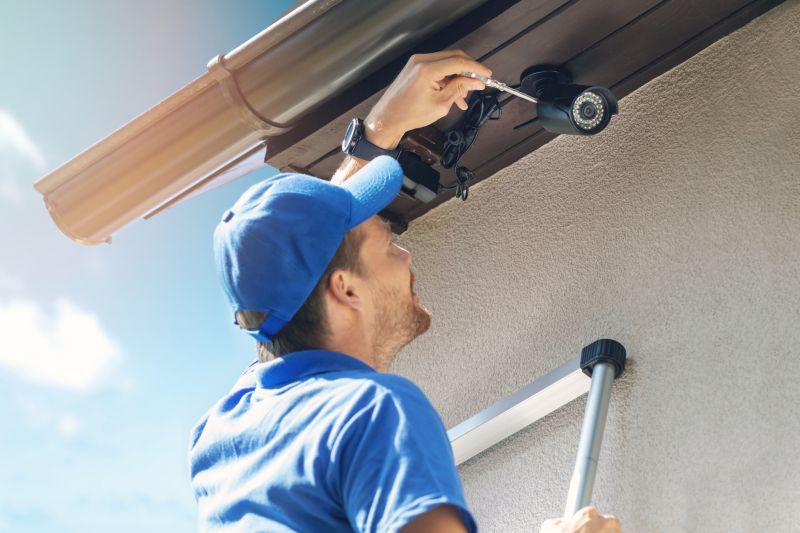Top Products For Eaves Constructions To Enhance Your Projects
Discover essential tools and materials that ensure durable and efficient eaves construction for a professional finish.
 Eaves construction plays a vital role in the overall durability and aesthetic appeal of a building. Properly designed and installed eaves help direct water away from the structure, reducing the risk of water damage and foundation issues. They also contribute to the visual character of a building, offering opportunities for decorative detailing and architectural expression. Selecting the right products for eaves construction ensures that the system functions effectively while complementing the building’s style.
Eaves construction plays a vital role in the overall durability and aesthetic appeal of a building. Properly designed and installed eaves help direct water away from the structure, reducing the risk of water damage and foundation issues. They also contribute to the visual character of a building, offering opportunities for decorative detailing and architectural expression. Selecting the right products for eaves construction ensures that the system functions effectively while complementing the building’s style.
Top Overall Option
Universal Eaves Construction Kit
A comprehensive kit designed to accommodate a variety of eaves construction needs, including adjustable components, durable materials, and easy-to-follow installation guides. It offers versatility for different building styles and ensures a cohesive, finished look. Ideal for both professional builders and DIY enthusiasts seeking reliable performance and adaptability.
Types of Products For Eaves Constructions
Wood Fascia Boards
Traditional and aesthetically appealing, wood fascia boards provide a natural look and can be painted or stained to match the building's design.
Vinyl Soffit Panels
Low-maintenance and resistant to moisture, vinyl soffit panels are available in various colors and styles to enhance eaves aesthetics.
Aluminum Gutter Systems
Durable and corrosion-resistant, aluminum gutters efficiently channel water away from eaves and foundations.
Steel Flashing
Heavy-duty steel flashing provides a weatherproof barrier at eaves intersections, preventing leaks and water intrusion.
Fascia Cover Boards
Pre-finished fascia covers offer a sleek appearance and protect underlying materials from weathering.
Eaves Ventilation Grilles
Ventilation grilles facilitate airflow within the attic space, helping to prevent moisture buildup and temperature extremes.
Rain Diverters
Designed to direct water away from sensitive areas, rain diverters help prevent water damage and staining.
Gutter Guards
Mesh or screen systems that prevent debris from clogging gutters, reducing maintenance needs.
Insulation Wraps
Insulation wraps for eaves help improve energy efficiency by reducing heat transfer and preventing condensation.
Decorative Trim Molding
Adds aesthetic detail and character to eaves, available in various styles and finishes.
Weatherproof Sealants
Sealants provide a waterproof barrier at joints and seams, enhancing durability and preventing leaks.
Ladder Brackets
Support brackets designed for safe and secure ladder access during maintenance or installation.
Eaves Support Brackets
Structural supports that help distribute weight and maintain the integrity of eaves systems.
Drainage Downspouts
Vertical pipes that direct water from gutters down to ground level, preventing water pooling around foundations.
Corner Flashing
Specialized flashing for corners to ensure water tightness at joints and intersections.
Popular Choices
Popular for their ease of installation and low maintenance, these panels provide ventilation and aesthetic appeal.
Widely used for their durability and resistance to corrosion, aluminum gutters are a common choice for eaves drainage.
Pre-finished fascia covers are favored for their clean look and protective qualities.
Effective in reducing gutter clogging, gutter guards are frequently selected for maintenance ease.
Trusted for long-term weatherproofing, steel flashing is a common component in eaves construction.
Ensuring proper attic ventilation, these grilles are a popular addition to eaves systems.
Help channel water away from vulnerable areas, making them a frequent choice in eaves setups.
Adding visual interest and finishing touches, decorative moldings are often used in eaves design.
Essential for directing water away from foundations, downspouts are a common feature of eaves systems.
Popular for sealing joints and seams, ensuring water tightness over time.
Increasingly used to improve energy efficiency and prevent condensation issues.
Vital for sealing corners and joints, corner flashing is frequently selected for comprehensive protection.
Eaves can be constructed using various materials, each offering different benefits in terms of longevity, maintenance, and appearance. Common options include wood, vinyl, aluminum, and steel, with each material presenting unique installation requirements and performance characteristics. The choice of material often depends on climate, budget, and desired aesthetic, making it important to consider these factors carefully.
In addition to the primary materials, a range of accessories and components are available to enhance the functionality and appearance of eaves. These include soffit panels, fascia boards, gutter systems, and weatherproofing elements. Proper integration of these components ensures that the eaves system provides effective water runoff, prevents pest intrusion, and maintains a clean, finished look.
When planning eaves construction, attention should be given to ventilation, insulation, and ease of maintenance. Well-ventilated eaves help regulate attic temperatures and prevent moisture buildup, while accessible components facilitate regular inspection and repairs. Choosing products that are compatible with existing building materials and meet local building codes is essential for a successful installation. Ultimately, the right selection of products can enhance both the functionality and curb appeal of a building, ensuring long-term performance and satisfaction.
Key Buying Considerations
- Material durability and resistance to weather elements
- Compatibility with existing building materials
- Ease of installation and maintenance requirements
- Aesthetic style and how it complements the building design
- Proper ventilation options to prevent moisture buildup
- Water management capabilities, including gutter and downspout compatibility
- Availability of accessories and expansion options
- Cost-effectiveness over the lifespan of the materials
- Compliance with local building codes and regulations
- Protection against pests and debris intrusion
- Ease of access for inspection and repairs
- Color options and finishes to match or accentuate the building exterior
- Weight and support requirements for structural integrity
- Resistance to corrosion, rust, or rot depending on material
- Environmental exposure considerations such as wind, snow, or heavy rain
